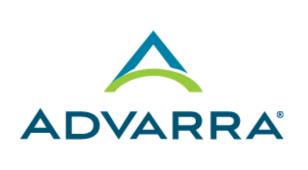Sponsors are Making Headway with Sites, but Blind Spots and Burdens Remain
Stuart Cotter, VP of Technology Strategy at Advarra, uses his vantage point working with both sites and sponsors to share the pain points sites are facing, the solutions sponsors are preparing, and what needs to still be addressed.

What is the latest you’re seeing from sites and sponsors to reduce the technology burdens within research?
The most significant technology hurdle within our current landscape is the multitude of systems sponsors and contract research organizations (CROs) mandate to sites across each individual trial. However, we’re seeing sponsors and CROs are increasingly understanding and looking to address the multiple system problem and creating a more cohesive experience for sites. There is no “one-size fits all” solution that can eliminate all redundancy across the varying sizes and complexities of all sites, sponsors, and CROs on a global scale. But there are models that we can follow to ensure each organization is using purpose-built solutions. In practice, that could look like centralizing the logins to one username and password or making separate systems more cohesive.
In addition to the technology provided by industry partners, sites continue to invest in their own technology to run their business and manage their entire research portfolio. The largest sites have solved this multiple-system problem to a degree by centralizing their organization’s licensed technology through a single sign-on function. But there is still a disconnect between sponsors and sites, with sponsors believing if they provide a technology solution, it will help all sites. In reality, sponsor-mandated technology is often duplicative of technology many sites have invested in to manage their organization.
What challenges are sites having when they come to you for help?
As a result of the multiple system overload across clinical trials, duplicate entry of information has always been, and continues to be, a challenge. A simple example is sending normal ranges for labs. If I’m a site working with a sponsor on one trial, I send them my normal lab range. If I am working with the same sponsor, but for a different trial, I have to send that lab range again. It’s the same information, for the same sponsor, from the same site.
Another example is filling out the same details over and over again to populate a site profile or site feasibility questionnaire (SFQ) across studies and systems. Instead of defaulting to study-by-study requests, sponsors and CROs should increase standardized information and processes across their organization to better improve the site experience. Thirdly, our institutional review board (IRB) service. In this case, a site is responsible for entering information to be reviewed by the IRB. Ideally, that information should route to a centralized location, where you can easily access and oversee site status.
At Advarra, we’re narrowing our focus on what is collected on a trial-to-trial basis. We're working to help sponsors and CROs identify and gather only what is required to get a site to the next step in the process, and leverage previously collected data to provide automation for that process.
"Sponsors can establish a baseline understanding of site workflows by better understanding the technology they’ve invested in, or what sponsor-provided technology they would need to support the study."
What’s a pain point from sites that you haven’t seen sponsors address yet?
A major challenge is Medicare coverage analysis (MCA). MCA is a process in place at sites in the United States used to determine what might be covered as a standard of care through insurance. It’s a critical part of the trial workflow for sites, ensuring correct billing, promoting compliance, and likely affecting study activation timelines. In our conversations with sponsors and CROs, I’ve learned MCA activities at sites are either unknown or unconsidered in their study startup timelines.
MCA is a time-consuming process at the site level, and requires knowledgeable and expert staff. Once a site has their budget from the sponsor, they need to determine which activities are billed to which stakeholder before they sign a contract. Currently, it’s the site’s responsibility to conduct this step, and it can have dramatic implications on their financial viability and compliance, as well as timelines.
Why is MCA such an important piece for sponsors to get involved with?
If there are errors in MCA like double-billing insurance or billing the sponsor for what should be an insurance-covered line item, there are a host of issues. First, there are complications around being paid correctly. Second, there are heavy fines and even risk of shutting down the site. In a recent survey we conducted with our research site community, a majority of sites indicated MCA takes longer than 14 days in their study startup timelines.
This entire process – working through the budgets and contracts component – can be a blind spot for sponsors because the items billed to insurance are not visible to a sponsor. On top of that, external forces such as labor shortages strain the staff who are certified and capable to conduct MCA at their organization, which further threaten compliance, turnaround times, and financial viability of the site.
What is the potential role of the sponsor in alleviating that challenge?
First things first, we need to do more to educate sponsors and CROs on this workflow at the site level. Moving forward, much of the administrative responsibility for MCA could be shared between stakeholders if sponsors were to create a starting blueprint of national coverage analyses for each of their trials – instead of needing each site to create it from scratch. A blueprint could be composed of a billing grid and calendar, broken down into the visits and what activities occur for each visit. While there would be additional regional nuances, this type of support could immediately accelerate site activation and reduce burdens on sites.
How can sponsors implement technology at the site level without introducing additional burden?
The first step is asking your sites what technology they are currently using and where they need additional support. In doing so, sponsors can establish a baseline understanding of site workflows by better understanding the technology they’ve invested in, or what sponsor-provided technology they would need to support the study. These types of conversations are already in practice around potential protocol designs, patient feedback, and more. Including technology in the conversation can also reap benefits to your workflows and partnerships.
The second step is choosing a technology a site can use across trials. It should not be a one-off system unique to that trial that a site will never use or see again.
And finally, invest more in collecting feedback at the conclusion of any trial. Gather feedback and metrics from sites directly to better adjust your approach for the next trial. No solution will have an overnight impact, but this collective approach provides additional touchpoints and knowledge necessary for your study team’s success.
"This entire process – working through the budgets and contracts component – can be a blind spot for sponsors because the items billed to insurance are not visible to a sponsor."
How do you view innovation in your role?
Innovation is a flashy term, but I believe it is first and foremost about rethinking how we approach problems. In my role, I aim to target inefficiencies on the larger level, not just within one silo or a specific vantage point. And to achieve that, I try not to go more than two days without listening and interacting with a member of the research community. Doing so gives me perspective and a window to actually understand what the industry need is, not designing for a need that doesn’t exist.
What is a problem sites experience that more action could be devoted to?
Payments to sites remains an issue. Certain sites continue to struggle with the run rate of money they have available. Not being paid on time or having payment terms unable to meet a site’s bills can put a site out of business or inhibit their future participation in research. For example, a site may have signed its first contract stating it’s 90 days to the payment, has likely already charged the CT scan and building and has rent due three times before payment arrives for the first visit. The delays and miscommunicated timelines force sites into financial volatility.
Some payment cycles are shorter, but this problem exists. Payment is often an incentive to ensure the site is doing all the correct activities, but it makes the sponsor-site relationship feel more like a vendor-consumer relationship rather than a partnership.
What can we do now to be in a better position for the future of clinical research?
From the site side, it will be about choosing the most appropriate trials for your organization. From the sponsor side, it revolves around providing sites a realistic view of the expectations of the trial. That includes the administrative time, collaboration, and investment any given trial would take.
For example, it could be as specific as a sponsor saying, “We think this study will require one half of a full-time equivalent (FTE) for a study coordinator and one half FTE for a regulatory coordinator.” This provides a more general overview of the complexity of the trial and how a site can better prepare or manage their resources.
It might require saying to a site, “We think you’re a great site but there is going to be a need for investment in this trial.” The site is then able to digest that, assess their own staff and capacity, and make an informed decision on taking on that trial or not. Having that type of engagement – showing realistically what the complexity of a trial will be – is currently under-developed from both sides.
What is the latest you can share with us about how Advarra is helping sites and sponsors?
Advarra’s priority focus is developing solutions that help not only sites, sponsors, and CROs run their clinical research, but also improving the relationship and workflows between them. Currently, much of these efforts are driven through our Longboat Platform, a centralized and integrated solution supporting the exchange of information and communication between all research stakeholders. We have a webinar on how sponsors and CROs can reduce site burden, specifically in study startup, with panelists from Syneos Health, Fortrea, Velocity, and PwC. At DPHARM 2023, we discussed site-centric strategies and solutions to improve clinical trial operations and relationships.









